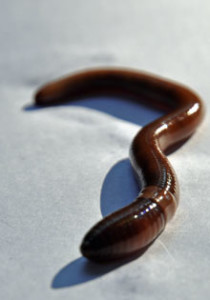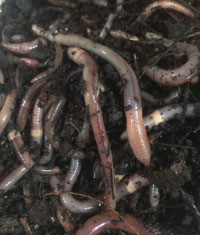Alburnus alburnus photo by David Perez
Update as of December 7, 2016: the Petition was amended to delete one species red swamp crayfish (Procambarus clarkia), for which we decided it needed more analysis. We will consider whether to re-propose it for an “injurious species” listing and/or other measures later
Last Friday morning, I delivered a Petition to the Secretary of the Interior’s office the roots of which go back 15 years to 2001. The title: Petition: To Amend 50 CFR §16.13 to List 43 High Risk Fish, Crayfish, and Mollusk Species as Injurious Species under the Lacey Act. (For a copy of the petition, use the “contact us” button on the CISP webpage.) I was really excited to file this on CISP’s behalf because it is the logical expansion of a more proactive approach to preventing introductions of invasive, disease-carrying, or otherwise “injurious” non-native animals that we don’t want running around in the United States. We already have scores of invaders (starlings, red lionfish, Burmese pythons, feral hogs, Asian carps, zebra and quagga mussels, tegus and on and on). We need to start doing multi-species listing proposals in order to change what has been an extremely slow process into one that works at a pace that can actually protect our nation’s resources – and people – from the risks of this age of vast globalized trade in live fish and wildlife.
Back in 2001, the National Invasive Species Council adopted its first Management Plan. One element in it was to adopt a science-based screening method aimed at identifying the highest risk non-native animals that we should keep out of the country. This was to have been completed by about 2006. I was appointed long ago (so far back I can’t remember the year) to the committee tasked with this responsibility. The Committee went through fits and starts and sometime in the mid-2000s just crashed into nothingness and stopped meeting. But, a dedicated U.S. Fish and Wildlife Service (FWS) biologist in the Midwest Region — Mike Hoff — kept at it for years on a shoestring budget and around 2011 he got some real funding and was able to get his animal screening project staffed. Lo and behold, they started developing lists of high-risk species based on robust scientific predictions. I won’t go into the models he used and the peer-review he had to go through. Suffice it to say that process took about 3 more years before Mike Hoff and his colleagues could convince the FWS to actually start publicly posting the results of their screening work. But, starting in 2014 they posted several and in late 2015 they posted them in earnest. Now there are 150 Ecological Risk Screening Summaries (ERSSs) on the bureau’s website.
Out of the 150 species, 63 pose a “high” overall risk of invasiveness/injuriousness. For funding and historical reasons most are aquatic species that could invade in the Great Lakes region, but even so it is a great beginning. The 63 species include 46 fishes, 8 crustaceans, and 9 mollusks. One fish on the website (mrigal, Cirrhinus cirrhosus) appears to be labeled “high risk” in error and one of the mollusks (zebra mussels, genus Dreissena) is already listed under the Lacey Act. Also, Interior already has formally proposed that 11 of the 63 species on the website should be listed as “injurious”. That is, almost exactly one year ago the agency proposed to add 10 of the non-native fish and one crustacean. Thus, those 11 are not included in this new Petition. The FWS needs to take action on them soon.
UPDATE: On Sept. 29th the FWS finalized its rule listing all 11 of those species. The regulation and the detailed FWS explanation for it published in the Federal Register set a strong precedent and a useful template for listing the 43 species in the Petition as well.
Now this Petition, which I co-wrote with my CISP colleague Phyllis Windle, PhD., should be the USFWS’ next multi-species listing. The 43 “high risk” species proposed in it are listed at the end of this blog. The Petition excludes 7 species with posted ERSSs that were “high: overall,” but were below a high rating for either their history of invasiveness or climate match. As a result, the 43 below represent the highest range of the FWS’s identified high risks. Species like the Devil firefish, virile crayfish and the bleak – just their names makes me not want them here – pose unacceptable risks.
While the voluntary program promoted by the FWS on its webpages along with the ERSSs is a commendable hope, a “please do not import” approach cannot be relied upon. Administrations and websites change and some industry outliers won’t follow voluntary measures anyway – some even see them as creating a business opportunity. As I have watched (and supported), Mike Hoff and the FWS invested a significant amount of funds and staff time over the last 10 years to develop this screening process and research and write the scores of posted ERSSs. Other experts were involved in designing the process and providing peer reviews at different stages. It would be a significant waste of taxpayer resources were the FWS not to follow through and take regulatory action for species posing a clearly high risk. None offers an essential benefit that outweighs its harm to the United States. Minimal to zero stakeholder opposition is expected to prohibiting them. So what are we waiting for? The listing Petition needs to get posted in the Federal Register for public comment and action started as soon as possible. This one is virtually a “no brainer”.
The proposed list additions are below. For a copy of the full Petition, use the “contact us” button the the CISP webpage.
Mollusks
(A) Bithynia tentaculata (faucet snail).
(B) Corbicula fluminea (Asian clam).
(C) Dreissena rostriformis bugensis (Quagga mussel).
(D) Limnoperna fortune (golden mussel).
(E) Potamopyrgus antipodarum (New Zealand mudsnail).
(F) Sinanodonta woodiana (Chinese pond mussel).
Fish
(A) Acanthogobius flavimanus (yellowfin goby).
(B) Alburnus alburnus (bleak).
(C) Alosa pseudoharengus (alewife).
(D) Cichlasoma bimaculatum (black acara).
(E) Coregonus lavaretus (powan).
(F) Ctenopharyngodon idella (grass carp).
(G) Cyprinella lutrensis (red shiner).
(H) Cyprinus carpio (common carp).
(I) Gymnocephalus cernua (ruffe).
(J) Hypomesus nipponensis (wakasagi).
(K) Ictalurus furcatus (blue catfish).
(L) Misgurnus anguillicaudatus (Oriental weatherfish).
(M) Morone americana (white perch).
(N) Neogobius melanostomus (round goby).
(O) Odontesthes bonariensis (Argentinian silverside).
(P) Oreochromis aureus (blue tilapia).
(Q) Oreochromis mossambicus (Mozambique tilapia).
(R) Oreochromis niloticus (Nile tilapia).
(S) Parachromis managuensis (Jaguar guapote).
(T) Poecilia reticulate (guppy).
(U) Pterois miles (Devil firefish).
(V) Pterois volitans (red lionfish).
(W) Pterygoplichthys pardalis (Amazon sailfin catfish).
(X) Pterygoplichthys multiradiatus (Orinoco sailfin catfish).
(Y) Pterygoplichthys disjunctivus (vermiculated sailfin catfish).
(Z) Pylodictis olivaris (flathead catfish).
(AA) Rhodeus ocellatus (rose bitterling).
(BB) Sarotherodon melanotheron (blackchin tilapia).
(CC) Scardinius erythrophthalmus (rudd).
(DD) Tilapia mariae (spotted tilapia).
(EE) Tilapia zillii (redbelly tilapia).
Crayfish
(A) Oronectes limosus (spiny-cheek crayfish).
(B) Oronectes propinquus (northern clearwater crayfish).
(C) Oronectes rusticus (rusty crayfish).
(D) Oronectes virilis (virile crayfish).
(E) Pacifastacus leniusculus (signal crayfish).
(F) Procambarus clarkia (red swamp crayfish).
Posted by Peter Jenkins


 Amynthes photo; from Wisconsin DNR website
Amynthes photo; from Wisconsin DNR website